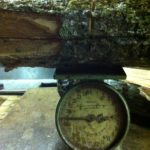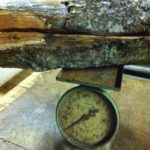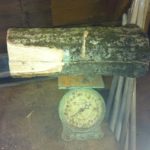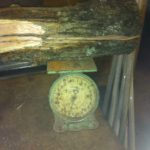Season vs. Green
Seasoned wood:
is defined by law as having been cut and air dried for at least six months. Whether or not a load of wood is seasoned may not be obvious to the untrained eye.
Here are a few clues: Because wood shrinks when it dries, seasoned wood you will see cracks or checks on the ends of some pieces depending on how it has been stored, in tree length you will see a few dark or black ends with cracks and the rest my look like fresh cut wood. The bark will be loose on at least some of the pieces look for areas where the wood has been skinned by equipment and look for your darkness there. Many species will have color in the first inch of the wood under the bark. If you are still unsure peel some of the bark off. If its slimy and very white then its most likely green wood. Seasoned wood is lighter than green, and banging two pieces together can produce a type of popping sound rather than a dull thud. The ends of at least some of the seasoned pieces will have a grey, weathered look.
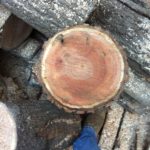
Above is a picture of a piece of Read Oak that is considered Seasoned. However if you inspect it closely it is still very wet, This piece of oak has been cut down into log length for 18 months. Notice the white ring around the outside edge just inside of the bark, if you look closely you can see black lines in this white area. If placed by the wood stove it would be very dry in very little time (3 to 5 days).
Drying Wood:
The best method for drying wood is to build a rack that gets the firewood off of the ground and allows air to circulate around the stack. An open, sunny location with good airflow on all sides of the stack or pile is best. Keeping the wood off the ground and trimming back any vegetation will also discourage insects from finding a home in your woodpile.
Green wood:
Is defined as wood that has just been cut down and is saturated with sap. Dry wood can have the same moisture content of green wood if it is left outside uncovered. Therefore it is important to cover your firewood once it is stacked, Covering only the top of the pile will ensure that you get the best airflow throughout the stack; but ensure that the rain stays off and the moisture can escape. Burning freshly cut “green” wood will make you unhappy and can be dangerous. Up to half the weight of green wood is water, which must be heated to steam and boiled off before the wood can reach temperatures required for combustion. The result is a fire that is hard to start, hard to keep going and provides far less usable heat for the home. Burning green wood is also more likely to result in a creosote problem. Creosote forms when temperatures drop too low in the stovepipe or chimney, and un-burnt but volatile gases in the smoke condense on those surfaces. Dense smoke from a smoldering fire, caused by too little air in the firebox and/or burning green wood, results in the greatest creosote buildup. Once enough creosote has accumulated, a hot fire can cause it to ignite, creating a dangerous chimney fire.
Moisture Content
If you are unsure if it is seasoned or green you can always measure the moisture content. To do this you will need a moisture meter, which can be bought atyour local hardware store or woodworkers supply The most important property of good firewood is moisture content. Firewood should be fully seasoned (to below 20 percent moisture content) before being burned. Because it can be difficult to ensure that purchased firewood is properly seasoned, the bestapproach is to buy and stack firewood well before it is needed. There is nodanger in over-seasoning wood drier is better.
The Experiment
Talking to many of our customers we have incountered many asking for seasoned wood thinking that it is dry. So we decided to expand on this page a little bit more and conduct this experiement to show you about water in the wood. Pictured in this section are two pieces of read oak that are roughly the same size. One is Green and one has been cut down from more than 2 years. You can see the differences between them beacuse of the colors in the wood and the weight of the wood (Notice that there is a 2 pound difference between them, this is noticable when being picked up).
